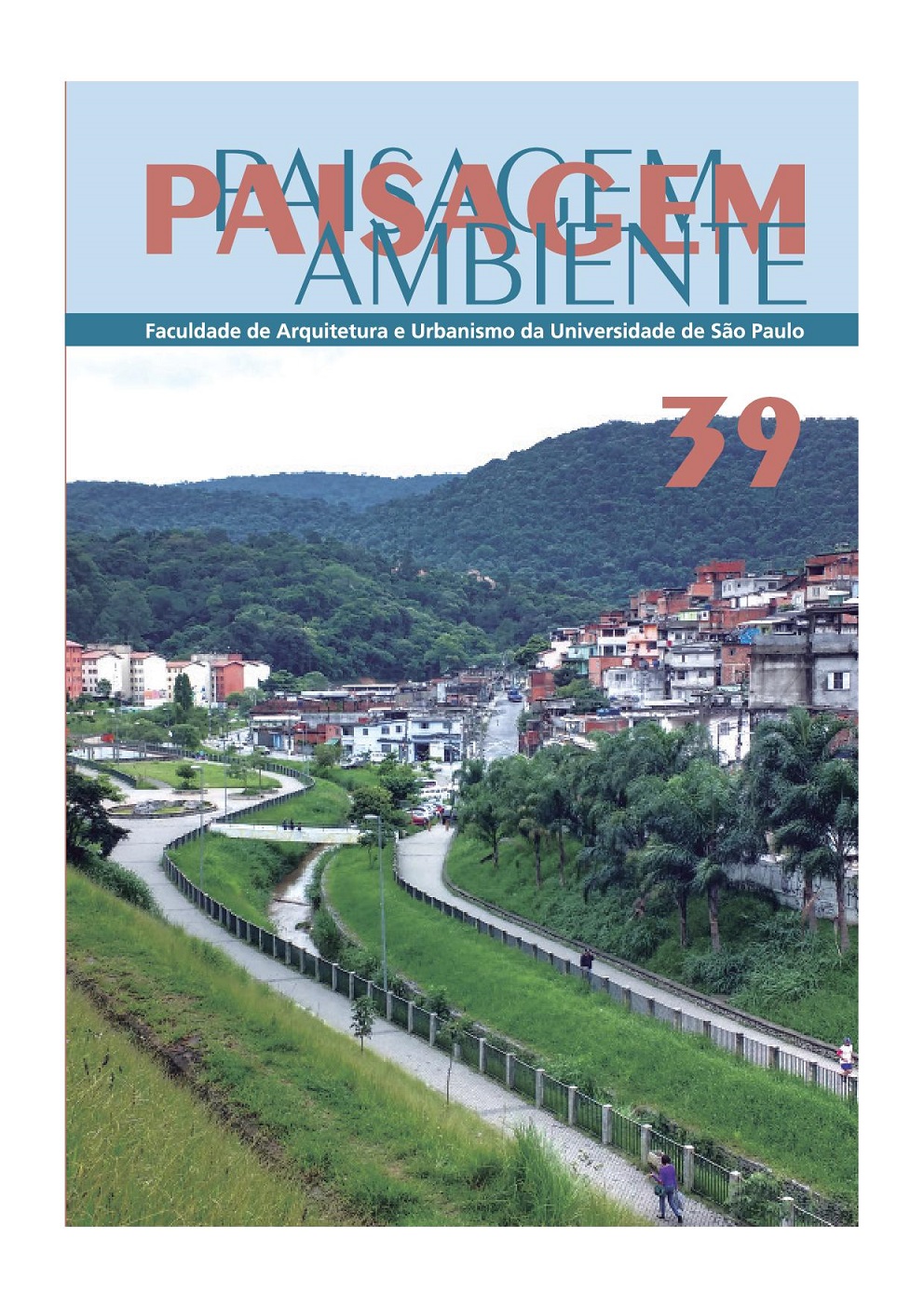Place antrophology on Villa Grimaldi: public space and symbolic plurality in Chilean urban landscape
DOI:
https://doi.org/10.11606/issn.2359-5361.v0i39p183-198Keywords:
Santiago do Chile. Villa Grimaldi. Public space. Place.Abstract
Villa Grimaldi, located in the metropolitan area of Santiago de Chile, comprises an area of approximately 10,200 m², which, at the beginning of the 20th century, served as a meeting place for artists and intellectuals, where discussions on the various areas of Chilean and world culture were held. After the military coup of 1973, this space housed the largest detention center of torture under the Chilean military regime. During the democratic “Concertación” period, after years of neglect, the area was turned into Corporación Parque por la Paz Villa Grimaldi. In 2004, the area was declared a National Monument, looking back at the period in which the village was used by the military and paying tribute to those who resisted the Chilean dictatorship. In view of the place’s paradoxical uses, this article seeks to establish the relations between the configuration of this collective space, its real and symbolic meanings and its integration in the urban fabric during each or the historical periods investigated in the research. The methodology consisted of a qualitative research of both the literature and the documents collected in the city of Santiago in the years 2014 and 2015. Through the theoretical contributions of authors such as Marc Augé, Lineu Castello and Norberg-Schulz, this article intends to establish a dialogic sense of public space in its different spectrum of use and architectural/urban sense to consolidate its inclusion (or not) in the city.Downloads
References
AUGÉ, Marc. Não lugares: introdução a uma antropologia da supermodernidade. Porto Alegre: Papirus, 1994.
AUGÉ, Marc. El viaje imposible: el turismo y sus imágenes. Barcelona: Gedisa, 1998.
CASTELLO, Lineu. A percepção de lugar: repensando o conceito de lugar em arquitetura-urbanismo. Porto Alegre: PROPAR-UFRGS, 2007.
CODEPU. Corporación de Promoción y Defensa de los Derechos del Pueblo. Por los derechos del pueblo: Memoria CODEPU 1980-1990. Santiago: Raul Castillo, Victor Alfaro e Luis Pastenes editores, 2015.
CORPORACIÓN PARQUE POR LA PAZ VILLA GRIMALDI. Proyecto Parque por la Paz. 1996. Disponível em: http://www.museovillagrimaldi.info/doc/1_5_1_3.pdf. Acesso em: 25 jun. 2016.
GONÇALVES, Jorge Manuel. Os espaços públicos na reconfiguração física e social da cidade. Lisboa: Lusíada, 2006.
HEIDEGGER, Martin. Ser e tempo. Parte I. 15 ed. Petrópolis: Vozes, 2005.
MINAYO, Maria Cecília. O desafio do conhecimento: pesquisa qualitativa em saúde. São Paulo: Hucitec, 2000.
MORIN, Edgar. O Método 5: a humanidade da humanidade. Porto Alegre: Sulina, 2002.
NORBERG-SCHULZ, Christian. O fenômeno do lugar. In: NESBITT, Kate (Org.). Uma nova agenda para a arquitetura: antologia teórica 1965-1995. 2 ed. São Paulo: Cosac Naify, 2013, p. 444-462.
REBOLLEDO, Javier. La danza de los cuervos: el destino final de los detenidos desaparecidos. Santiago: Ceibo Ediciones, 2013.
SALAZAR, Gabriel. Villa Grimaldi (Cuartel Terranova): historia, testimonio, reflexión. Volumen I. Santiago: LOM Ediciones, 2013.
SANTOS, Milton. A natureza do espaço: técnica e tempo, razão e emoção. 4 ed. São Paulo: Edusp, 2006.
VASSALO ROJAS, Emilio. Villa Grimaldi: historia y características de las grandes mansiones. Santiago: Impr. Siglo XX, 1967.
Downloads
Published
Issue
Section
License

A revista Paisagem e Ambiente: ensaios tem licença Creative Commons
Creative Commons - Atribuição-NãoComercial-CompartilhaIgual 4.0 Internacional
DIADORIM - Diretório de Políticas Editoriais
O detentor dos direitos autorais é o autor do artigo. A revista exige apenas o ineditismo na publicação do artigo. O autor tem do direito de divulgar seu artigo conforme sua conveniência.


